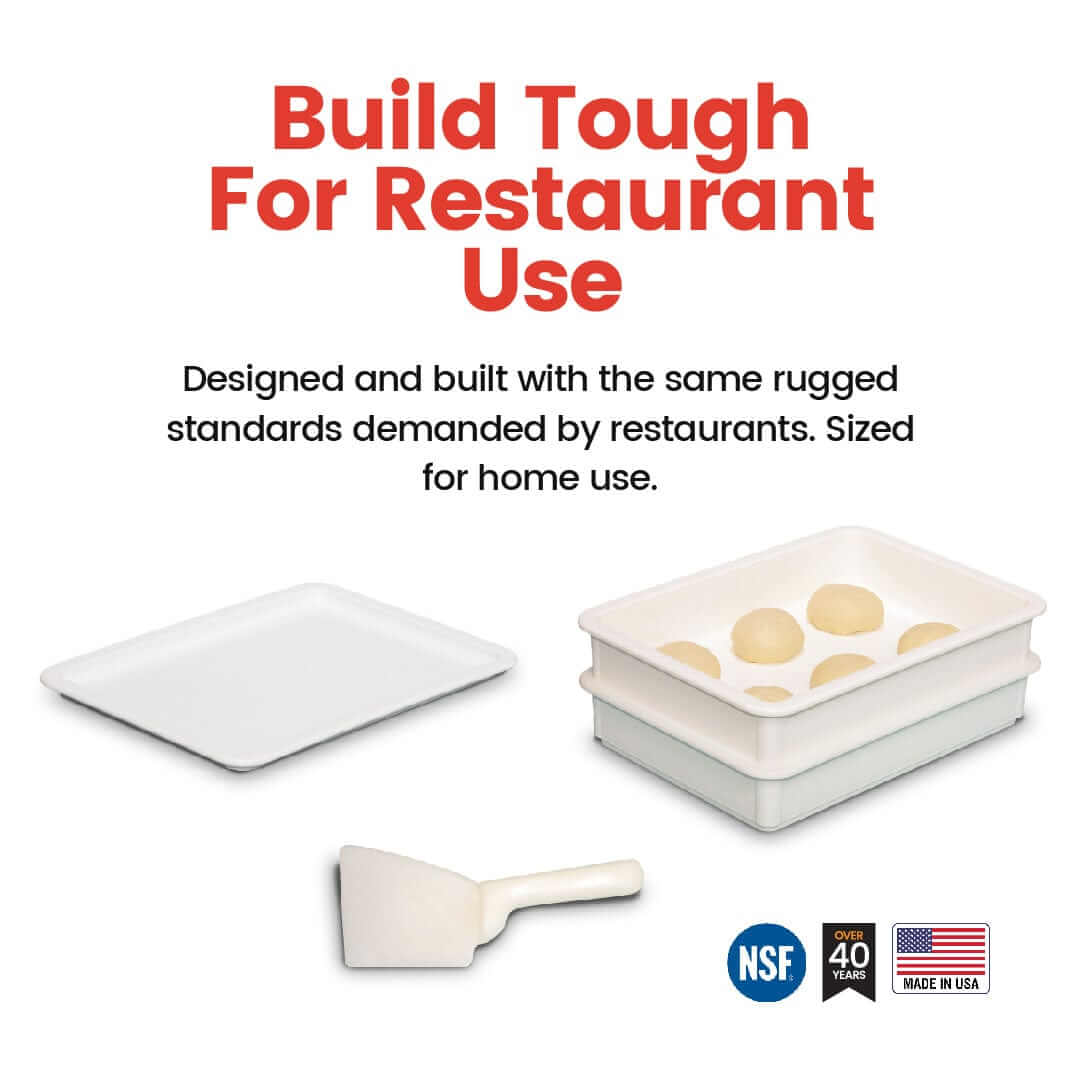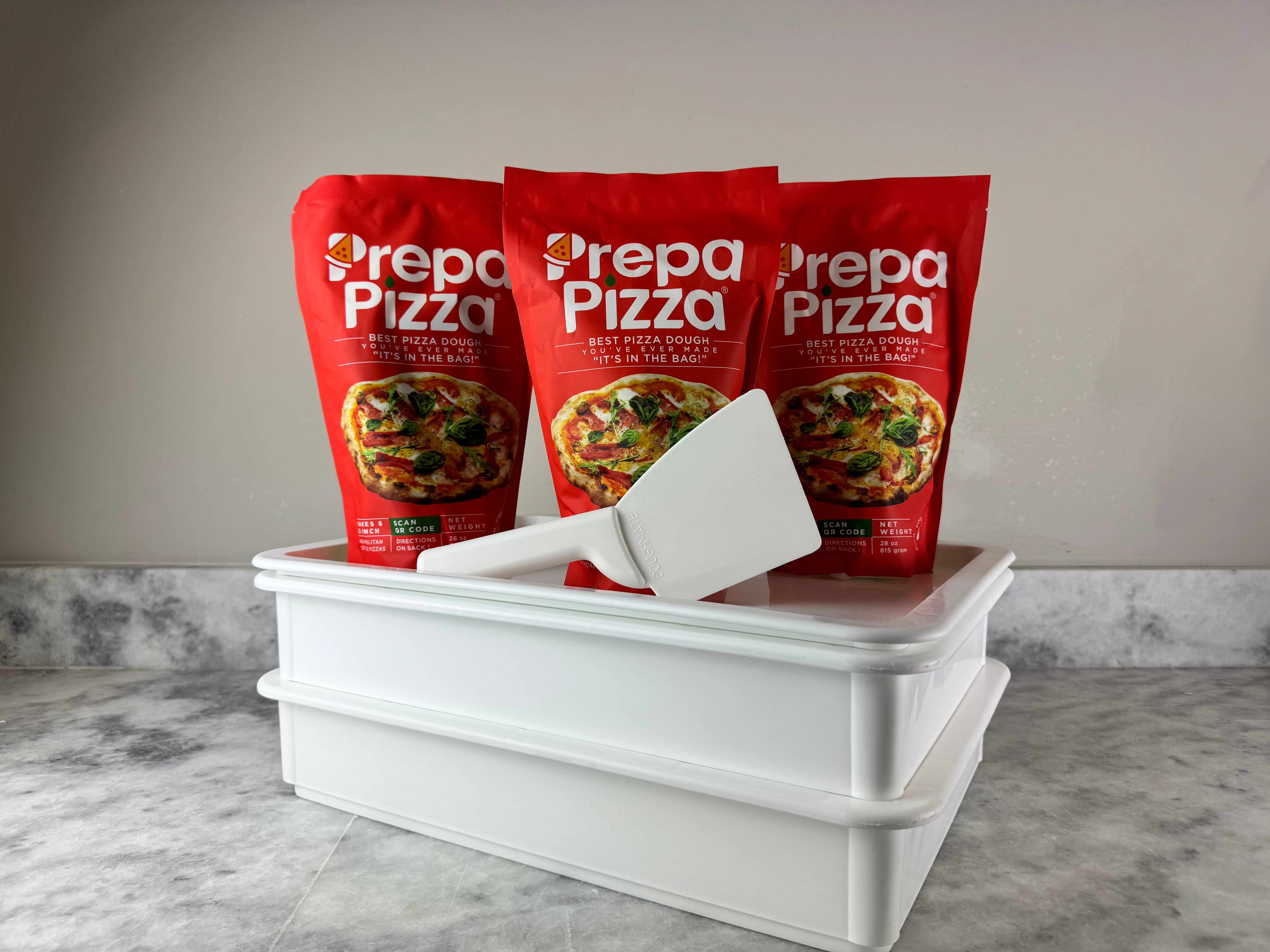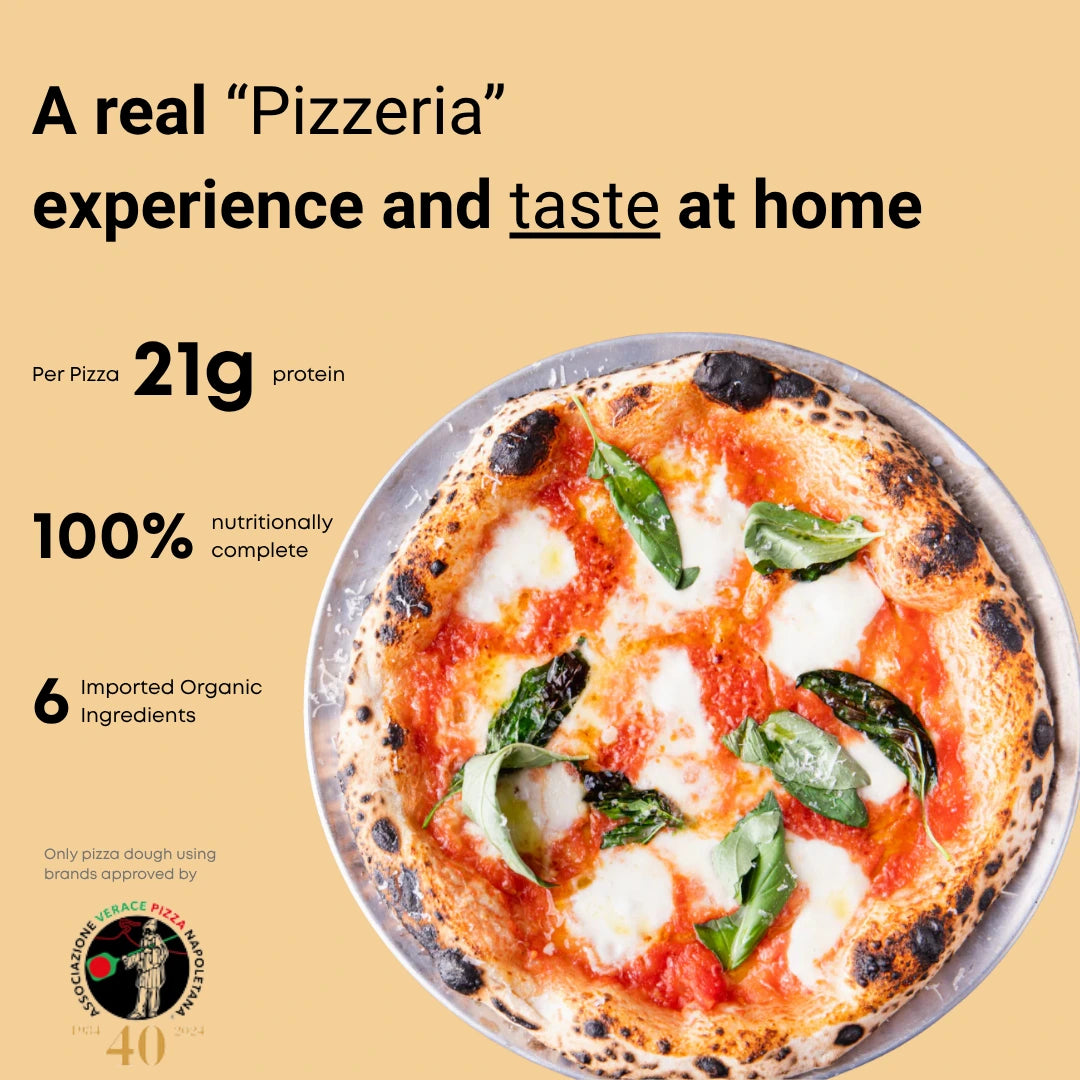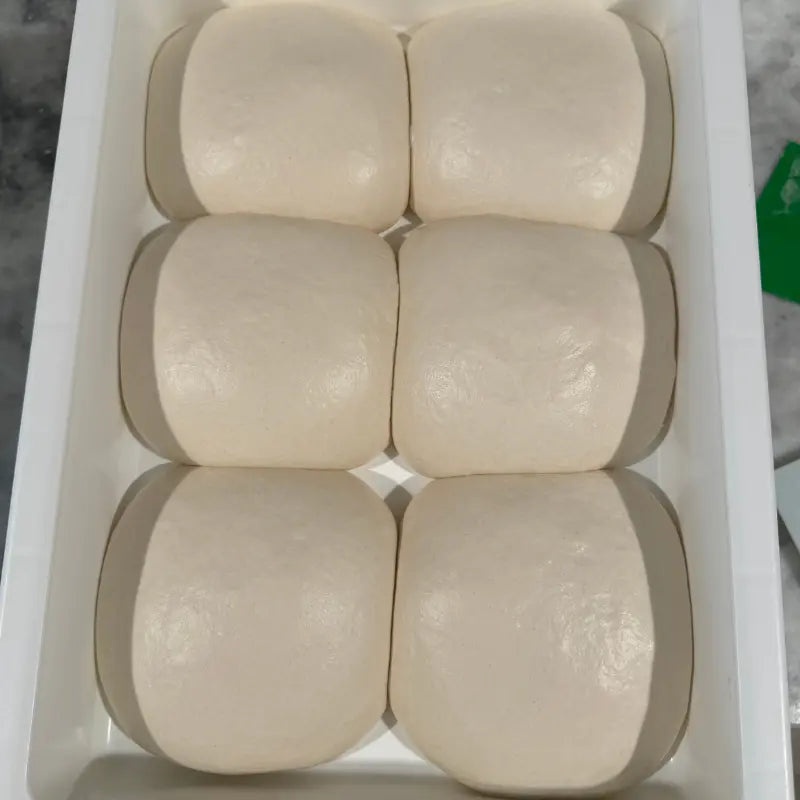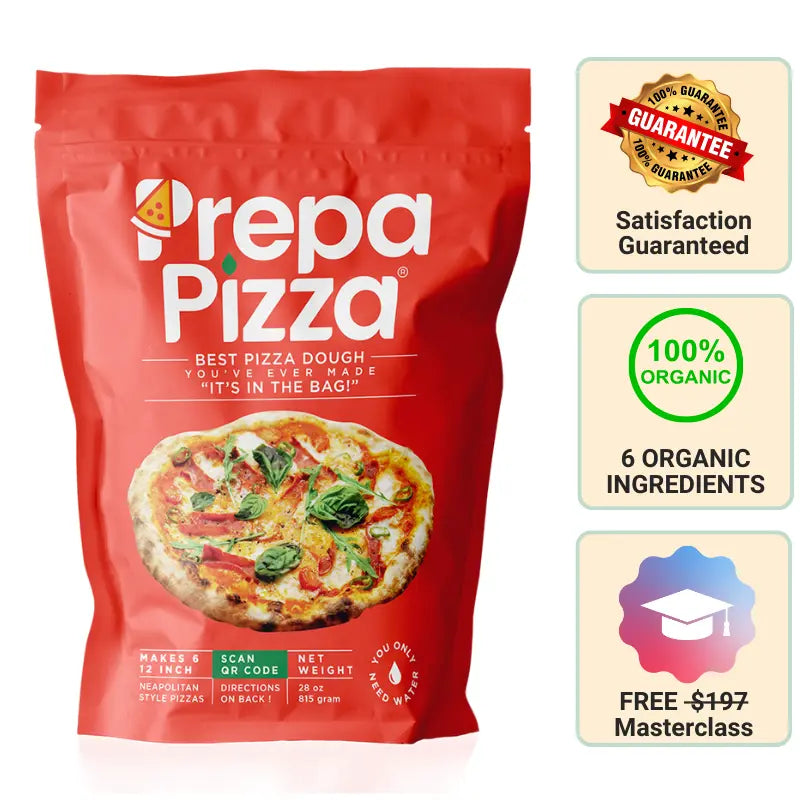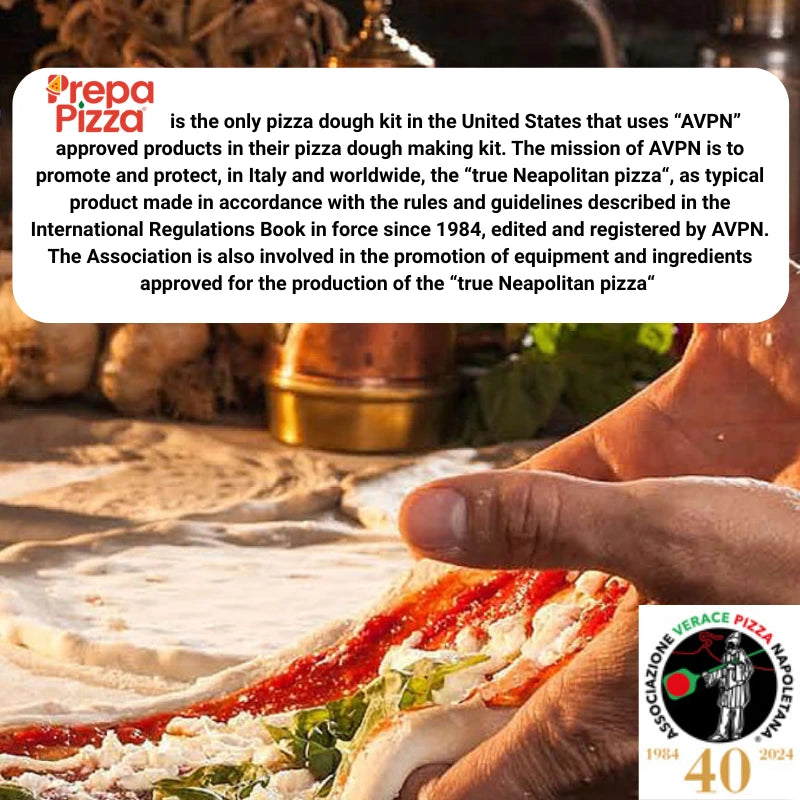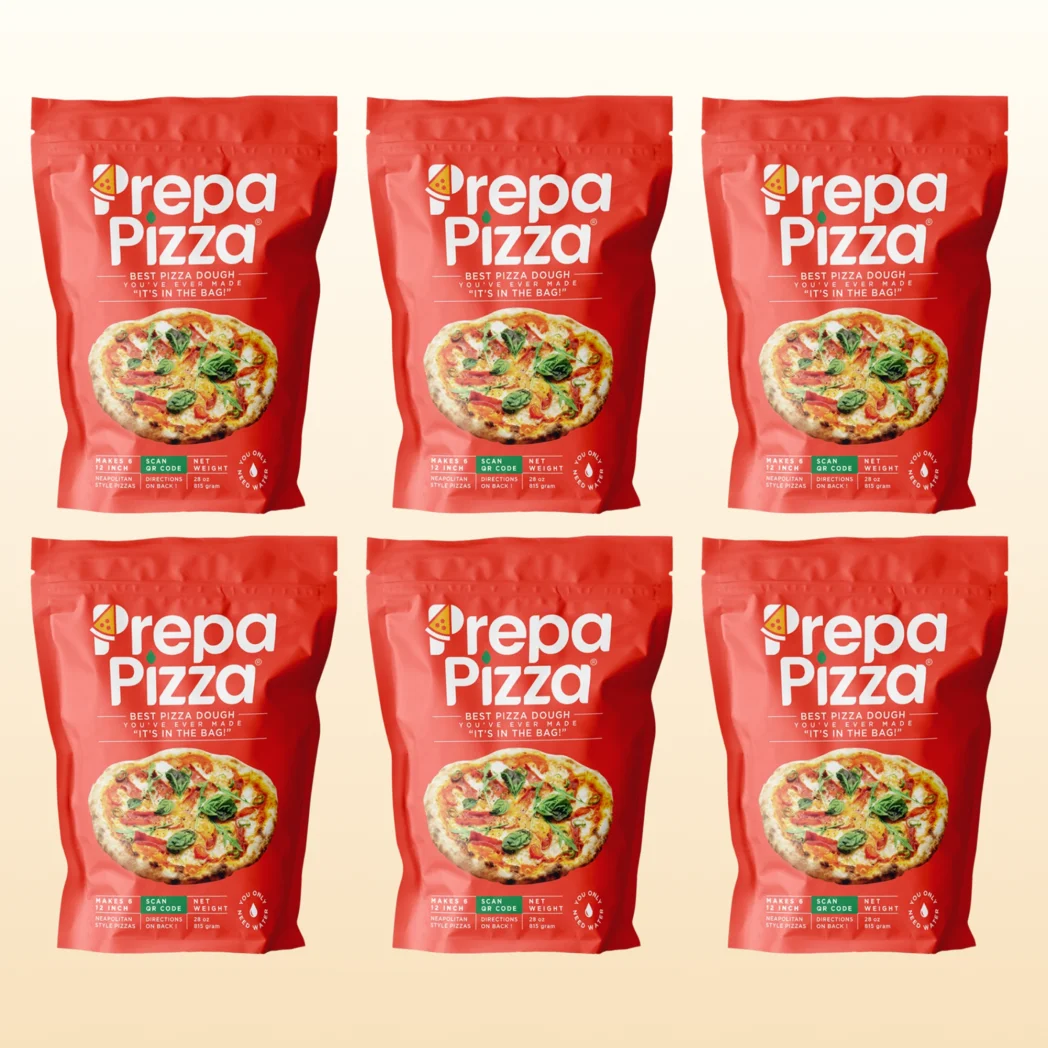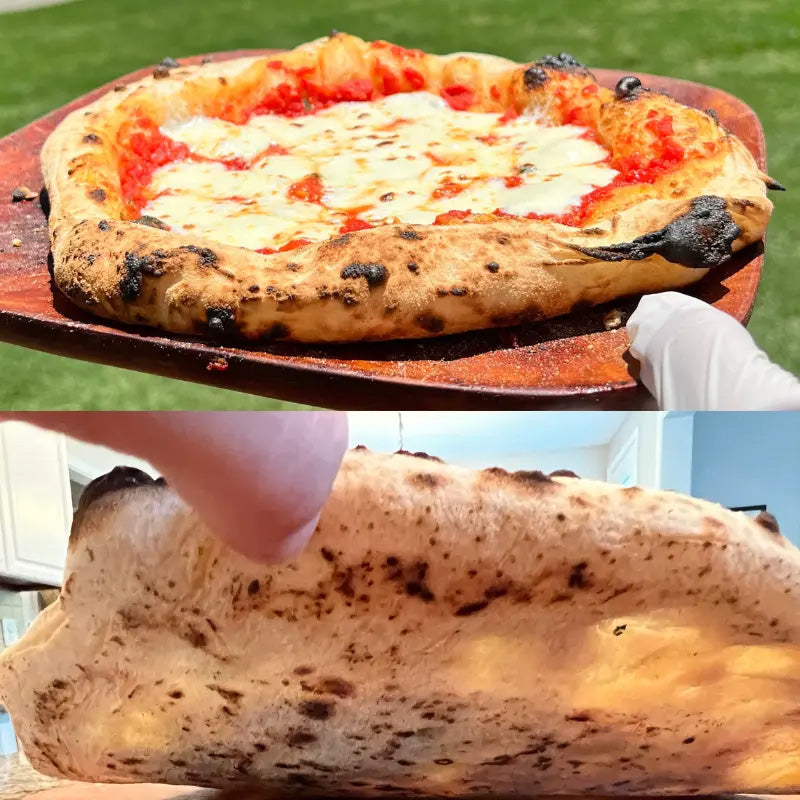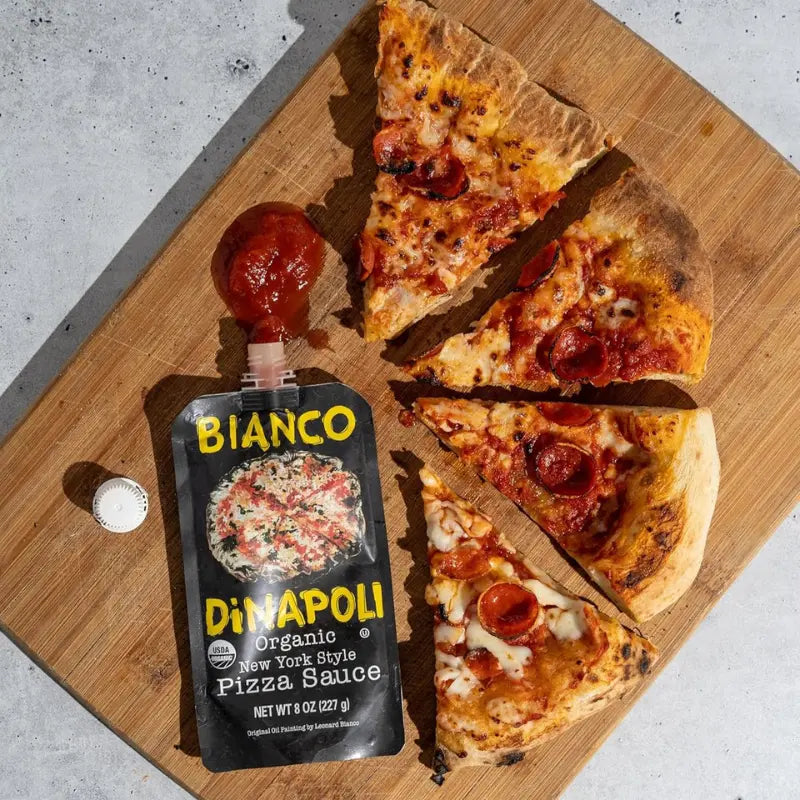
Stone Ground Flour Benefits and Uses for Baking and Cooking
If you're looking to elevate your homemade pizza, understanding stone ground flour is a great place to start. Stone ground flour is made by grinding whole grains between stones, preserving more nutrients, fiber, and flavor compared to regular flour. Using this flour in your dough can lead to richer texture and taste, making your pizza stand out.
Prepa Pizza offers premium quality premade dough crafted with quality ingredients to ensure a restaurant-level product at home. You can easily bring the benefits of stone ground flour into your kitchen by trying Prepa Pizza’s ready-to-use dough kit, designed for convenience without sacrificing texture or flavor. Explore the perfect base for your pizza at Prepa Pizza’s premade dough kit page.
Choosing stone ground flour impacts not only taste but also the health aspects of your meal. By opting for products made with this type of flour, like Prepa Pizza’s dough, you get a wholesome, flavorful foundation for any pizza creation, whether simple or gourmet. Your pizza experience can be better with every bite.
What Is Stone Ground Flour?
Stone ground flour is made by a traditional milling method that preserves most parts of the grain. It produces flour with a coarser texture and retains more natural nutrients than typical refined flours. This influences how the flour behaves in recipes, including doughs like those offered by Prepa Pizza.
Using stone ground flour affects flavor and texture. If you want to experiment with dough, consider Prepa Pizza’s premade dough kits, which use high-quality ingredients for consistent results and great taste. You can find their products at Prepa Pizza premade dough.
Definition and Meaning
Stone ground flour is produced by crushing whole wheat kernels between two large stones. This method dates back centuries and differs from modern roller milling by its slower, gentler grind. Because the entire grain—bran, germ, and endosperm—is kept intact, the flour is considered a whole-grain flour.
The bran and germ in stone ground flour contribute to its nutritional value. You get more fiber, vitamins, and minerals compared to refined flours. The coarser grind results in particles of varying size, which influences texture and baking qualities.
Key Characteristics
Stone ground flour stands out for its coarser texture and slightly uneven particle size. This gives baked goods a denser crumb and a more robust flavor due to the intact bran and germ. The flour typically has a darker color than white flour and may have a nuttier taste.
Because the wheat germ remains, stone ground flour contains more natural oils, which can make it spoil faster if not stored properly. It generally requires longer kneading or mixing times, particularly in artisanal bread or dough applications.
Differences From Other Flours
Unlike roller-milled flour, which removes bran and germ to create a fine, uniform texture, stone ground flour keeps these components, making it more nutrient-rich. Roller-milled flour is lighter and produces airier doughs, while stone ground flour’s coarse particles can slow yeast activity, resulting in denser loaves.
Typically, stone ground flour is better suited for hearty breads rather than delicate pastries. The presence of bran and germ also means it absorbs more water. These factors make it distinct from all-purpose or cake flours, which prioritize lightness and consistency.
For premium dough that balances texture and flavor, try Prepa Pizza’s dough kits that combine traditional techniques with quality ingredients to suit your pizza-making needs.
Stone Milling Process
Stone milling uses traditional methods that preserve more of the grain’s natural components, resulting in flour with a distinct texture and flavor. The process involves specific milling equipment and careful handling of bran and germ, which impacts the final product’s quality.
If you want to make your own pizza with authentic quality, consider Prepa Pizza’s premade dough, made with premium ingredients and designed to give you restaurant-quality results every time. Their dough uses the right flour to balance texture and nutrition—explore their Prepa Pizza Dough Kit to enhance your baking.
Stone Mills and Milling Techniques
Stone milling grinds wheat between two large stones—one fixed, the other rotating at a controlled speed. This slow grinding minimizes heat buildup, helping retain nutrients and preserving the flour’s natural oils. Unlike roller milling, stones crush and shear grains, maintaining the bran and germ as part of the flour.
Granite and emery stones are common materials used, with granite stones generally producing a finer, more uniform grind. The precise gap between stones controls particle size, directly affecting how your dough behaves during baking.
Role of Sifting
Sifting in stone milling is minimal compared to roller milling. Because stone mills retain the bran and germ, the flour is naturally whole grain, with particles varying in size. This coarser texture includes bran fragments that remain angular and fine, contributing to the flour’s nutritional density.
Limited sifting means the flour has more fiber and micronutrients, which influence hydration and dough strength. If you use Prepa Pizza's premade dough, this natural retention improves the dough’s structure and flavor, supporting superior crust development.
Impact on Texture and Flavor
Stone-milled flour has a coarser texture and richer flavor than roller-milled flour. The bran and germ particles are more intact, giving dough a complex, nutty taste and a hearty mouthfeel. This makes it ideal for artisan-style pizzas or rustic breads.
The slower milling process prevents heat damage, preserving enzymes that contribute to flavor development during fermentation. Using fine stone-milled flour in your dough, such as with Prepa Pizza’s premade dough, can enhance both texture and taste for better baking outcomes.
Health Benefits and Nutritional Value
Stone ground flour maintains more of the grain’s natural components, which supports overall nutrition better than many refined flours. This type of flour is especially rich in fiber, protein, and minerals from the bran and germ that remain intact during milling. When you use premade dough from Prepa Pizza, which incorporates this quality flour, you benefit from both convenience and enhanced nutritional value. Explore their premium Prepa Pizza dough to enjoy these advantages in your homemade pizzas.
This flour’s careful processing helps preserve key nutrients and improves the fiber content in your meals, key factors in supporting digestion and sustained energy.
Nutritional Profile
Stone ground flour retains the bran, germ, and endosperm, offering a full nutritional spectrum unlike refined options that remove the bran and germ. This means higher levels of dietary fiber, proteins, B vitamins, iron, and magnesium.
| Nutrient | Approximate Amount (per 100g) | Benefits |
|---|---|---|
| Fiber | 10-12g | Supports digestion, satiety |
| Protein | 12-14g | Aids tissue repair, muscle growth |
| Iron | 3-4mg | Important for oxygen transport |
| Magnesium | 100mg | Supports muscle and nerve function |
Because stone ground flour is milled slowly and at low temperatures, these nutrients are better preserved compared to high-speed industrial milling, which often destroys sensitive vitamins and antioxidants.
Potential Health Benefits
Using stone ground flour can positively affect blood sugar control due to its high fiber content and slower digestion rate. This helps stabilize blood sugar, providing longer-lasting energy and reducing spikes common with refined white flour.
The whole grain content supports heart health through antioxidants and phytochemicals found in the bran and germ. Additionally, the preserved healthy fats may contribute to better absorption of fat-soluble vitamins.
When you bake using Prepa Pizza’s premade dough with stone ground flour, you incorporate these benefits into your meals easily while enjoying a product made with carefully selected and restaurant-quality ingredients to ensure quality and flavor.
Whole Grains and Gluten Content
Stone ground flour is essentially a whole-grain flour, meaning it keeps all parts of the grain intact. This provides more fiber and nutrients than refined flours but still contains gluten, which is essential for dough elasticity and rise in breads and pizza crust.
If you have mild gluten sensitivity, the presence of the germ and bran may actually slow digestion and improve tolerance. However, it’s not gluten-free, so it’s not suitable for celiac disease.
Prepa Pizza relies on this balanced gluten content in their dough to deliver a perfect texture—you get the chewiness and structure expected from high-quality pizza dough while benefiting from whole-grain nutrition.
Baking With Stone-Ground Flour
Using stone-ground flour brings a distinct texture and flavor to your baked goods. It often requires adjustments to typical recipes because of its coarse grind and higher bran content. When baking bread or pastries, expect a denser crumb and richer taste, which can elevate traditional recipes.
If you are new to working with this flour, consider starting with premium premade dough like Prepa Pizza’s offering, made with quality ingredients for consistent results. Their dough kit simplifies the process and allows you to enjoy the benefits of stone-ground flour with less prep time, available here: https://www.prepapizza.com/products/prepa-pizza-dough-kit?_atid=ASKIZXfltwWZPVrz7efsK3EbTcxmqi.
Bread Baking and Sourdough
Stone-ground flour excels in bread baking, especially with sourdough. Its coarse texture improves crust development and adds a rich, nutty flavor to your loaf. Because of the higher bran levels, hydration needs are usually higher than with refined flour.
The gluten structure may develop differently, often requiring longer kneading or fermentation for optimal dough strength. Using a bench scraper helps manage the stickier dough. You can enhance your sourdough by adjusting fermentation times to allow the bran to soften, resulting in better crumb aeration and shape.
Pastries and Pie Dough
When you bake pastries or pie dough with stone-ground flour, expect a heartier, rustic texture. The bran can interfere with gluten formation, so mixing gently is crucial to avoid toughness. Incorporate cold fats carefully to maintain flakiness and prevent overworking the dough.
Due to the flour’s absorbency, your dough will need slightly more liquid. Keep chill times longer to relax gluten and improve handling. Using premium premade dough, like from Prepa Pizza, can provide a consistent base, especially if you want to avoid the trial and error of working directly with stone-ground flour.
Tips for Working With Stone-Ground Flour
Start by increasing hydration by about 5-10% compared to all-purpose flour. The bran in stone-ground flour absorbs more water, so your dough should feel moist but not sticky.
Be patient with resting and fermentation—the extra bran slows gluten development. Slow, cold fermentation can improve texture and flavor. Use a bench scraper to handle sticky dough easily while shaping or dividing.
Store stone-ground flour in a cool, dry place or refrigerate to keep it fresh longer, as the oils in the germ can go rancid faster than in refined flour.
Recommended Baking Tools
You should have a bench scraper for dividing and shaping sticky stone-ground dough efficiently. Its rigid edge helps lift dough without tearing, which is essential for managing dense mixes.
A digital scale is valuable to accurately measure hydration adjustments since precise water levels affect dough consistency substantially. A dough scraper or flexible spatula helps when folding during fermentation. Additionally, using a sturdy baking stone or steel enhances crust quality, especially in sourdough or artisan breads.
For best results, combine these tools with premium premade dough, such as Prepa Pizza’s kit, to make your baking process easier and more reliable.
Varieties and Sourcing
Choosing the right stone ground flour means understanding the wheat types and the origins of the grain. You’ll find that local and regional mills reflect the quality and characteristics of their specific wheat crop. This helps you select flour that fits your baking goals, especially if you use products like Prepa Pizza’s premium premade dough, which rely on high-quality flour for best results.
You can explore Prepa Pizza’s premade dough kit to experience consistent, restaurant-quality dough made with carefully sourced stone-ground flour.
Types of Wheat Used
Stone ground flour is often milled from hard wheat or soft wheat, which have distinct qualities. Hard wheat contains higher protein, giving your dough strength and elasticity, ideal for breads and pizza bases like those made with Prepa Pizza dough. Soft wheat has less protein and is better for pastries and cakes due to its lighter texture.
You’ll also encounter heirloom wheat varieties that are less modified and can add unique flavors. These wheat types retain nutrients better when stone ground. Many mills offer blends of whole wheat, spelt, rye, and artisan grains, giving you options tailored to your recipe’s needs.
Local and Regional Mills
Local mills play a significant role in the quality and availability of stone ground flour. The resurgence of baking combined with commodity flour shortages has boosted demand for local mills sourcing wheat from nearby farms, often called the local grain shed. Mills like Carolina Ground Flour Mill focus on stone grinding regional wheat, preserving grain integrity and nutrient content.
Buying from local mills means fresher flour with distinct characteristics shaped by regional farming practices. These mills support sustainable agriculture and allow you to know the source of your flour, which can improve flavor and reliability compared to mass-produced options.
Impact of Regional Terroir
Terroir, or the environmental factors affecting wheat growth, strongly defines flour quality. Soil type, climate, and farming methods create subtle differences in wheat grown across regions. This regional terroir influences grain density, flavor, and baking performance.
When weaving regional wheat into stone ground flour, you get flour that reflects the landscape it came from. This depth of flavor enhances doughs crafted with high-quality flour, such as the Prepa Pizza premade dough. Recognizing the terroir behind your flour helps you achieve consistent results and appreciate the unique qualities of regional wheat.
Cookbooks and Further Exploration
Exploring stone ground flour deeply involves understanding its origins, techniques, and unique flavor profiles. You can expand your baking skills through curated cookbooks and discover ways to combine stone ground flour with other varieties to enhance texture and taste. Using quality premade dough like Prepa Pizza’s premium pizza dough can also help you experience artisanal baking with convenience and consistency.
Recommended Resources
To dive deeper into stone ground flour, Southern Ground by Jennifer Lapidus is a key resource. This book offers over 75 recipes and profiles of Southern craft bakers who champion cold stone-milled grains. It emphasizes using locally farmed ingredients and highlights the rich flavors of stone ground flour.
Books like Mother Grains and The Miller’s Daughter also make excellent references. They explore heritage grains and traditional milling, providing insight into the craft behind artisanal flours. Meanwhile, The Flour Lab discusses scientific approaches to flour types, helping you better understand performance differences.
These resources help develop your appreciation for grain quality and milling methods, enriching your baking repertoire beyond common commercial flours.
Innovative Uses and Blending with Other Flours
Stone ground flour’s robust flavor and texture make it ideal for creative baking. You can blend it with softer, more refined flours to balance hearty taste with lighter crumb structures. For example, mixing stone ground flour with all-purpose flour or using it alongside whole wheat can improve dough elasticity and rise.
In pizza dough, using or supplementing with stone ground flour enhances crust flavor and chew—a reason why Prepa Pizza’s dough delivers restaurant-quality results with consistent texture and taste.
You can also experiment by integrating stone ground flour into breads, pastries, or pancakes to add depth. Paying attention to hydration and fermentation is important, as the coarser grind affects absorption and dough behavior. This technique allows you to customize your recipes while preserving the flour’s unique character.
Frequently Asked Questions
Stone ground flour retains the bran and germ, which impact nutrition, flavor, and texture in baked goods. Understanding its uses and differences helps you decide how to incorporate it into your cooking or baking. When using Prepa Pizza's premade dough, these qualities may influence your final crust’s character.
If you want premium quality dough with consistent results, Prepa Pizza offers a pre-made dough kit crafted to give you restaurant-quality pizza bases with top ingredients.
What are the health benefits of stone ground flour?
Stone ground flour usually contains more fiber, vitamins, and minerals because it includes the entire wheat kernel. This can promote better digestion and provide a more nutrient-dense option.
The retention of bran and germ helps preserve antioxidants and other nutrients often lost in refined flours.
Can stone ground flour be used as a substitute for all-purpose flour?
Yes, but with adjustments. Stone ground flour is coarser and absorbs more liquid, so you may need to tweak hydration or resting times in recipes.
Prepa Pizza’s dough kits are optimized for consistent hydration, so if you use stone ground flour at home, expect slightly different dough behavior.
Where can one purchase stone ground flour?
You can find stone ground flour at health food stores, specialty mills, or online from artisan millers. Local mills often provide fresher, high-quality options.
Check for flours labeled “stone ground” to ensure traditional milling methods were used.
Are there unique recipes that specifically require stone ground flour?
Stone ground flour is common in hearty breads and artisan recipes where its texture and flavor add depth. It’s often preferred for rustic breads but less common in delicate pastries.
Using Prepa Pizza’s dough means you don’t need to source your own flour, as their recipe balances quality and ease.
How does stone ground flour compare to whole wheat flour?
Both contain bran and germ, but stone ground flour is fresher and retains more flavor. Whole wheat flour is usually roller-milled, which can generate heat and reduce nutrient content.
Stone ground flour offers a more complex taste and slightly coarser texture compared to regular whole wheat flour.
Is there a difference in taste or texture when using stone ground flour in bread making?
Yes, bread made with stone ground flour tends to have a stronger, nuttier flavor and a denser crumb due to the intact bran and germ.
If you use Prepa Pizza’s premade dough, you get a reliable texture and flavor without needing to manage flour types yourself.





